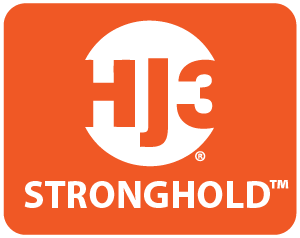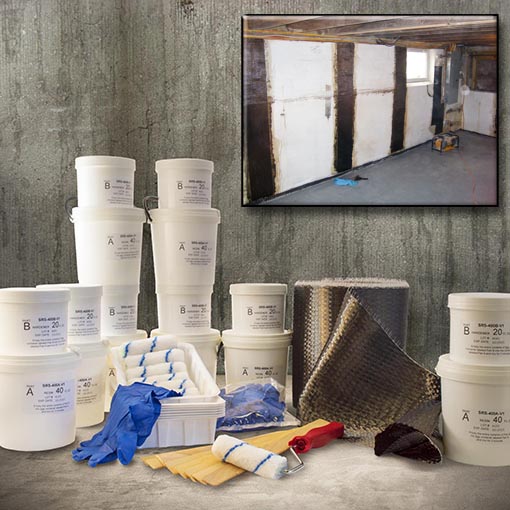When your home’s foundation has issues, it’ll tell you in different ways. The most common are cracks in your walls or an inward bowing, especially in a basement or garage wall. And while these symptoms can worry many homeowners, they are reparable, and in fact, you have several repair options at your fingertips. So how do you know which one is best? Here, we’ll compare the benefits and drawbacks of a traditional steel beam or channel repair with those of a cutting edge, innovative carbon fiber repair.
Traditional Steel
Steel beams or channels have successfully repaired countless damaged walls. Installation involves cutting a steel beam or channel to size, and then anchoring the steel to your foundation’s footing at the bottom and the floor joists above. In order to do this, the beam may be drilled into the foundation, or, in many cases, the footing has to be opened up and re-cemented closed after the beam has been installed. To attach the beam to the joists at the top, a block of wood is drilled into the joists and against the beam. The beam makes contact with the wall in its furthest-deflected point, preventing it from bowing inward any further.
Benefits of Steel for Bowing Wall Repairs
- Effectively stops a wall from bowing
- Works even for walls with a deflection greater than 2 inches
Drawbacks of using Steel for Bowing Wall Repairs
- Heavy beams must be carried through your home and into your basement
- Since the beams stick out 4-6 inches from the wall, your room’s square footage is reduced
- Installation requires a very experienced crew
- When installing, joists can be damaged from pressure put against them
- Very obvious repair often scares potential homebuyers away if you decide to sell your home
- The installation process takes at least 2 days
Carbon Fiber
Carbon fiber is the latest technological advancement in bowing wall repairs. Installation involves removing any paint or loose concrete from the affected wall with a mechanical grinder, and then carbon fiber fabric, saturated with epoxy, is pressed against the wall in pre-determined spacing intervals. After installing, the carbon fiber can be painted to hide the repair and match any desired aesthetic. Since carbon fiber is 10 times stronger than steel, the repair is permanent and requires no maintenance whatsoever.
Benefits of Carbon Fiber for Bowing Wall Repairs
- Effectively stops a wall from bowing
- 10 times stronger than steel
- Lightweight fabric is easy to work with and non-invasive
- Only 1/16th of an inch thick! Won’t reduce room’s square footage
- Maintenance free
- Easy, fast installation
- You can Do it Yourself! – No need to hire a contractor if you don’t want to
- Easily painted to minimize appearance
- Installs in just hours! Not days.
- Great for block, poured concrete, or masonry walls
Drawbacks of Carbon Fiber
- Most effective on walls with 2-inch deflection or less
While both repair options will sufficiently repair your bowed wall, choosing the right one for you will depend on many factors. If you’re unsure, I always suggest calling an experienced contractor or foundation expert for professional advice.
For more information about carbon fiber and how it can effectively repair your bowing walls, write me today at STRsupport@hj3.com.

